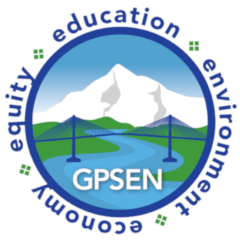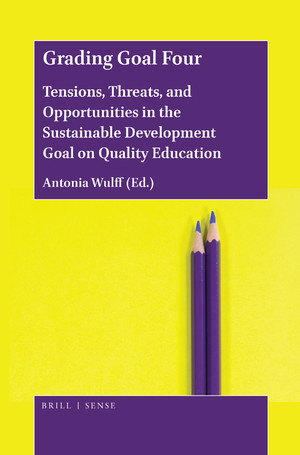Grading Goal Four – Tensions, Threats, and Opportunities in the Sustainable Development Goal on Quality Education
PublicationsGrading Goal Four – Tensions, Threats, and Opportunities in the Sustainable Development Goal on Quality Education
For the third time in three decades world leaders reaffirmed their promise of “Education For All” when adopting Sustainable Development Goal 4 in 2015. It is the most far-reaching commitment to quality and equity in education so far, yet, there is no consensus on what the agenda means in practice.
With a decade left until the 2030 deadline, Grading Goal Four calls upon the education community to engage more thoughtfully and critically with SDG 4 and related efforts. As an ever-growing number of actors and initiatives claim to contribute to its achievement, it is becoming clear that the ambitious but broad priorities within the goal are vulnerable to cherry-picking and misrepresentation, placing it at the heart of tensions between instrumentalist and rights-based approaches to education. This text, a critical analysis of SDG 4, provides a framework for examining trends and developments in education globally.
As the first volume that examines early implementation efforts under SDG 4, Grading Goal Four formulates a critique along with strategies for moving forward. By scrutinising the challenges, tensions and power dynamics shaping SDG 4, it advances rights-based perspectives and strategies for effective implementation and builds capacity for strengthened monitoring and analysis of the goal.
TABLE OF CONTENTS
Chapter 1 – Introduction: Bringing Out the Tensions, Challenges, and Opportunities Within Sustainable Development Goal 4
Antonia Wulff
Chapter 2 – The twists and turns in negotiating a global education goal:
A civil society perspective
Antonia Wulff
Chapter 3 – Gender Equality, Education, and Development: Tensions Between Global, National, and Local Policy Discourses in Postcolonial Contexts
Naureen Durrani and Anjum Halai
Chapter 4 – Quality Education for All? The Promises and Limitations of the SDG Framework for Inclusive Education and Students with Disabilities
Christopher J. Johnstone, Matthew J. Schuelka, and Ghada Swadek
Chapter 5 – A Critical Exploration of How Language-of-Instruction Choices Affect Educational Equity
Lizzi O. Milligan, Zubeida Desai, and Carol Benson
Chapter 6 – Universities, the Public Good, and the SDG 4 Vision
Stephanie Allais, Colleen Howell, Palesa Molebatsi, Lerato Posholi, and Elaine Unterhalter
Chapter 7 – Education for All Open for Business? Public Goods vs. Private Profits
Alexandra Draxler
Chapter 8 – Financing SDG 4: Context, Challenges, and Solutions
David Archer and Tanvir Muntasim
Chapter 9 – SDG 4 and the ‘Education Quality Turn’: Prospects, Possibilities, and Problems
Yusuf Sayed and Kate Moriarty
Chapter 10 – Teachers Are More Than ‘Supply’: Toward Meaningful Measurement of Pedagogy and Teachers in SDG 4
Stephanie Bengtsson, Mamusu Kamanda, Jo Ailwood, and Bilal Barakat
Chapter 11 – Reshaping Quality and Equity: Global Learning Metrics as a Ready-made Solution to a Manufactured Crisis
Aaron Benavot and William C. Smith
Chapter 12 – Learning Assessments in the Time of SDGs: New Actors and Evolving Alliances in the Construction of a Global Field
Clara Fontdevila
Chapter 13 – Can Education Transform Our World? Global Citizenship Education and the UN’s 2030 Agenda for Sustainable Development
Joel Westheimer
Chapter 14 – Will Education Post-2015 Move Us toward Environmental Sustainability?
Hikaru Komatsu, Jeremy Rappleye, and Iveta Silova
Chapter 15 – Reflections on Targets and TVET
Stephanie Allais and Volker Wedekind
Chapter 16 – Between Tokenism and Inclusion: The Student Movement in the Post-2015 Process
Luke Shore and Viktor Grønne
Chapter 17 – The Right to Education and SDG 4: Lessons from the Field and Next Steps for Civil Society Monitoring
Allyson Krupar and Anjela Taneja
The whole book is open access, published by Brill | Sense, and you find it here: https://brill.com/view/title/

